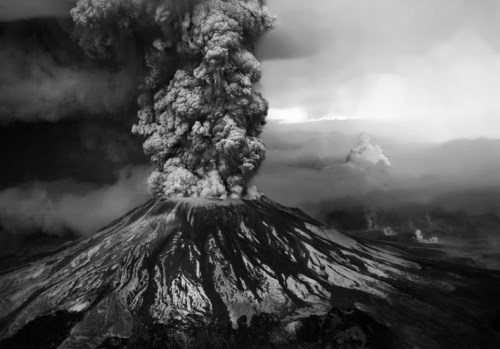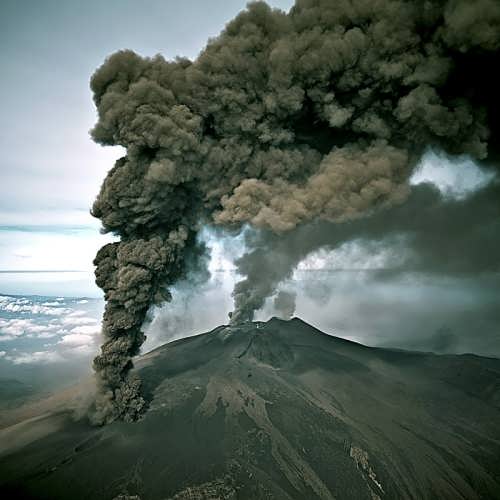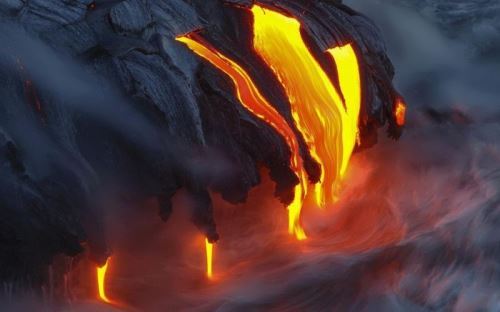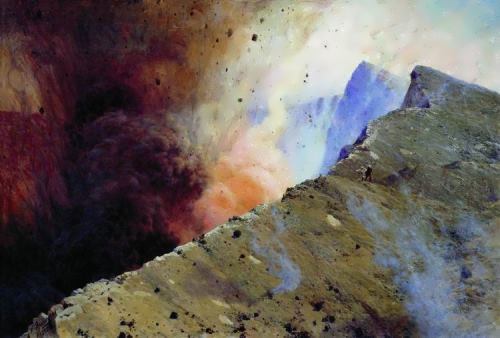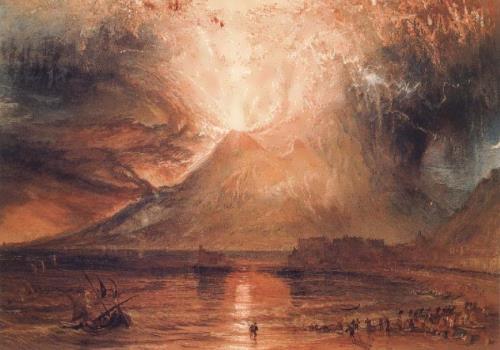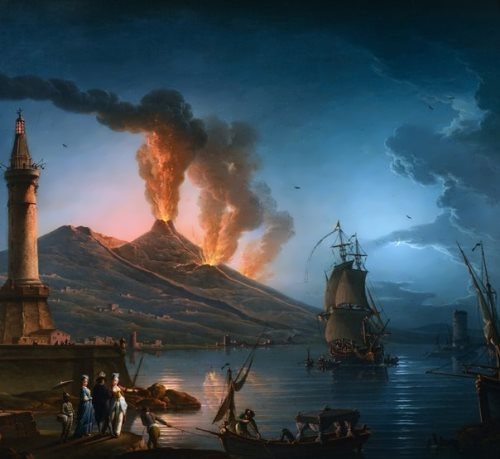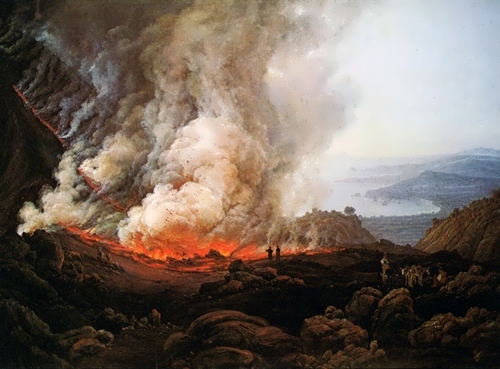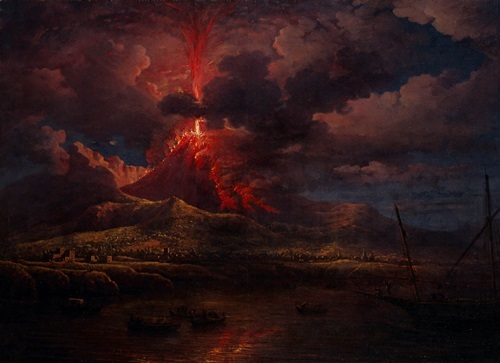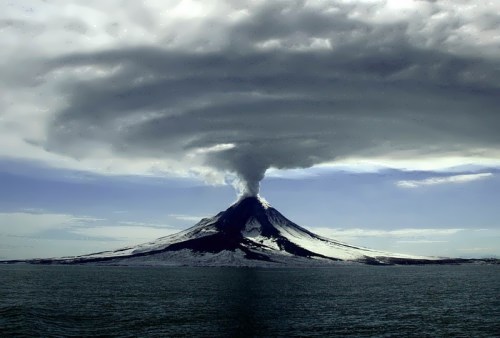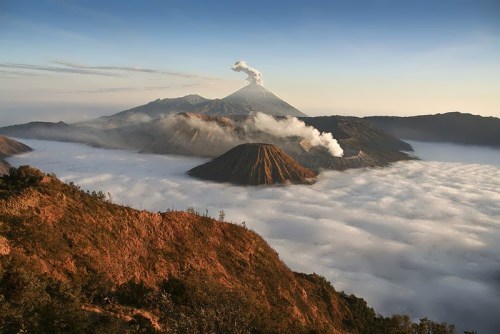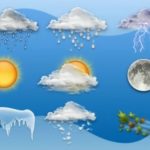Volcanoes – thermostat of the planet
Deep under the Earth’s surface it’s so hot that even rock melts. Molten rock is called magma. Magma released from a volcano is known as lava. Fresh lava ranges from 1,300° to 2,200° F (700° to 1,200° C) in temperature. As it cools, it hardens into rock. Because of the wind, volcanic ash can coat the land for miles around the volcano. Some volcanoes release clouds of poisonous gas or huge clouds of ash.
They have been called the thermostat of the planet.
Many haven’t erupted in years and have cooled off, and they are called “dead volcanoes.”
There are “sleeping volcanoes” which may “wake up” someday and start erupting. For example, Mount Vesuvius in Italy slept for a thousand years and in AD 79 it suddenly woke up. Its hot lava buried the city of Pompeii and Herculaneum.
Some volcanoes help provide heat and energy. Many Icelandic homes get their hot water from springs heated by volcanic steam.
Valuable gems, such as diamonds, can sometimes be found in the rocks that volcanoes spit out.
Hot springs, geysers, and fumaroles are other types of volcanic activity. They happen in places where magma heats underground water. A hot spring is a place where warm water comes up through the ground. A geyser is a kind of hot spring that shoots water and steam into the air. Fumaroles are vents that release gas and steam.
Climate scientists often assert that volcanoes play a role in driving climate change on Earth. Gases and aerosols produced by volcanoes affect climate change directly as exemplified by Mount Pinatubo.
Iceland is known as the land of ice and fire. Under its frozen surface there smolders a volcanic fire that at times breaks free and causes disasters. The island is located over a hot spot on the Central Atlantic Ridge. In this area the ocean bed is expanding, and large quantities of lava flow from vents, fissures, and craters.
Historic Eruptions
In the year AD 79, nearly 2,000 years ago, the people of the busy town of Pompeii hurried about their lives without thinking of Vesuvius. Pompeii is twenty kilometers south- east of Naples, and it is only ten kilometers from the great volcano. At that time, Pompeii was a rich town of 20,000 people with a busy port and market. All around the town were the beautiful homes of rich merchants and their families.
Then, on the 24th of August, AD 79, everything changed for ever. In the middle of the morning, the earth began to shake; cups fell off tables, and holes appeared in the ground.
At midday, a great cloud of ash rose up out of Vesuvius. People panicked and tried to escape. But it was too late. In two days, the town was covered in four meters of ash and stones.
On August 25, the day after the first eruption, Herculaneum was suddenly covered by a violent river of hot ash and mud. In a few hours, the town was buried under twenty meters of hardened rock from the volcano.
Roman writer Pliny the Younger survived and wrote a detailed description of the disaster.
The 1944 eruption of Mount Vesuvius took place during World War II and caused as much damage as the eruption at the beginning of the 20th century had, because it flooded Somma, Atrio de Cevallo, Massa, and San Sebastiano.
Mount Etna has always been an active volcano. It could be said that the volcano has not given the beautiful island of Sicily a moment’s rest. The Greek philosopher Plato was the first to study Mount Etna. He traveled to Italy, especially to see it up close, and he subsequently described how the lava cooled.
Two of the deadliest volcanic eruptions happened in 1815 and 1883 on islands in what is now Indonesia. The eruptions killed tens of thousands of people.
In 1815, Tambora Mountain on the Indonesian island of Sumbawa erupted for 10 days and killed 56,000 people. The ash cloud expanded to more than 370 miles (600 km) away from the epicenter of the eruption, and it was so thick that it hid the Sun for two days.
In early 1883, Krakatoa was just one of many volcanic islands on Earth. It was located in the Straits of Sundra, between Java and Sumatra in the Dutch East Indies, now known as Indonesia. It had an area of 10.8 square miles (28 sq km) and a central peak with a height of 2,690 feet (820 m). When the explosion took place, it destroyed two thirds of the island.
The 1980 eruption of Mount Saint Helens, in the U.S. state of Washington, was one of the biggest in North America. 57 people were killed, and lava flows destroyed trees over an area of 232 square miles (600 sq km). The lake overflowed, causing mudslides that destroyed houses and roads.
The 1982 eruption of the El Chichón volcano in the state of Chiapas, Mexico, released 30 million metric tons of carbon dioxide, a greenhouse gas, into the atmosphere. Since carbon dioxide is heavier than air, it can collect in low clouds and kill many people and animals during eruptions. It was the worst volcanic disaster in Mexico’s history.
In 1902 a burning cloud and a thick mass of ash and hot lava were shot from Mount Pelee that completely destroyed the port city of Saint-Pierre. This destruction took place in only a few minutes. Almost the entire population died, and only three people survived, one of them because he was trapped in the city jail.
The 1991 eruption of Mount Pinatubo, in the Philippines, was the largest of the 1900s.
In November 2004 an eruption from the Grímsvötn volcano sent an ash plume over Scandinavia and disrupted flights into Iceland.
On April 14, 2010, Eyjafjallajökull volcano in the south of Iceland erupted. The resulting ash cloud closed airspace over the UK and Northern Europe for several days. The resulting travel delays and cancellations cost the airline industry around two billion dollars.
Volcanoes – thermostat of the planet
Sources:
My First Britannica
Britannica Student Encyclopedia
Environmental Encyclopedia
Speak Out 4, 2003


